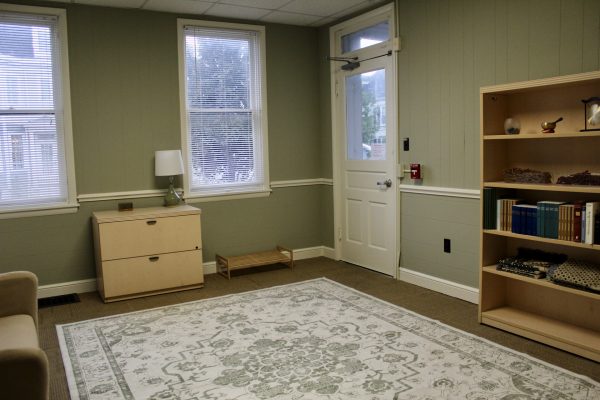Campus Clubs Coming Back?
Since the COVID-19 pandemic, clubs on campus have struggled to return to operations as normal. In Nov. 2022, The Dickinsonian reported that because of the pandemic, MOB was finding it “almost logistically impossible to execute events on campus.”
Sofia Perrone ’25, president of the American Association of University Women, partly attributed the “dramatic increase in participation” this academic year to the end of the pandemic, and partly to the recent revival of the AAUW club.
Perrone said that they went from about “three regularly attending members to 20” and that they have mostly focused on word of mouth to grow their ranks. “Having consistent and widely advertised events help,” she said, “but most of it is word of mouth. Members bring their friends, and this creates a growth cycle.”
She ended by saying “Sometimes it feels like COVID zapped everyone’s energy, and there is little interest in student life left. Our events reminded me that students are interested, you just have to keep reaching out.”
According to Alexis Boseman ’24, the Womanist Collective has a mailing list of “148 recipients mostly of current members (including some alumni).” Their EngageD has a roster of 91 members, although Boseman says “Womanist Collective is in a unique position seeing as though our club was founded not too long before the pandemic hit.”
She also added that “I’ve personally noticed lower campus involvement happening on a wider scale due to people getting comfortable in their isolation, the country’s mental health crisis, among other things. When we all returned to campus, WC attempted to reach a wider audience by holding more events and even collaborating more with other clubs and organizations.”
First-years seem to make up a large proportion of club membership as Boseman said, “I’d say at least 50% of our club is [made up] of the freshman class. I will also add that freshmen tend to show up more and seemingly are more willing to contribute to our weekly meetings than any other class group.”
Ben Warren ’25, president of the Ornithology Club, said “our whole incoming exec board is made up of first-years and I’d say they make up half to two-thirds of our active membership.” Similarly, a little less than half of Anwar Belly Dance Troupe is made of first-years, with three out of the seven current members being part of the first year class.
Nate Chaves ’24, president of the Arts Collective, said the club has a mailing list with “A little over 200 students.” On changing club enrollment since students returned to campus after the pandemic, Chaves commented that “on average our meetings during the fall semester of 2021 had roughly 15-20 students. Last semester and into this semester we were averaging in the 40s, with our more popular meetings getting around 60-70 people.”
Some smaller clubs have been having issues with membership and turnout. Anwar Belly Dance Troupe has a mailing list of 74 people and an EngageD membership of 15 members. According to the club’s president, Molly Moran ’24, for some time they “held weekly ‘open classes’ where non-troupe members could come to learn bellydance fundamentals. However, we would only see attendance for it the first couple weeks of the semester, if that.” Since then, they have not held open classes as frequently, and the current Troupe members have a GroupMe.
Moran attributed lower interest to the return from the pandemic, saying “My guess would be that initially coming out of COVID, people were really interested in joining clubs, but once things settled down a bit, people put clubs more on the back burner. I also feel like some clubs have been lost entirely because the transition of power was complicated during COVID.”



